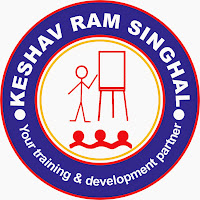A Concise Guide on Creating and Updating Documented Information
I am glad to inform that Pothi.com has released my book 'A Concise Guide on Creating and Updating Documented Information'. This book is a concise guide for creating and updating documented information in organizations implementing ISO 9001:2015 quality management system (QMS). It is helpful to executives and professionals having responsibility to implement QMS in the organization.
Please
CLICK HERE for Pothi.com link.
Contents
Contents of this book are as under:
- Preface
- List of questions on documented information
- Documented information in ISO 9001:2015 QMS
- Structure of documented information
- Purpose and benefits of documented information
- Is quality manual required?
- Developing documented information
- Quality manual (or QMS manual, description book or instructions manual)
- Procedures
- Work instructions
- Forms
- Quality plan
- Approval of documented information
- Bibliography
Listed Questions
I have listed 48 questions on documented information. You can get the answers to these questions in this concise guide. These 48 questions are:
1. Does ISO 9001:2015 QMS standard specify any particular format or design for documented information to maintain and to retain?
2. Earlier version ISO 9001:2008 QMS standard used the terms 'document', 'record', 'documented procedure', 'quality manual' and 'quality plan', however these terms are not used in the requirements of ISO 9001:2015 QMS standard, instead a new term has been used in ISO 9001:2015 QMS standard requirements. What is the new term?
3. Can an organization (implementing ISO 9001:2015 QMS) use the terms 'document', 'record', 'documented procedure', 'quality manual' and 'quality plan'?
4. Can documented information be in any media?
5. ISO 9001:2015 QMS standard has used two types of terms: 'maintain documented information' and 'retain documented information'. What do these terms mean?
6. What are the provisions of ISO 9001:2015 QMS standard with regard to the organization's quality management system documentation? Also state the clause reference of the standard.
7. Does an organization (implementing ISO 9001:2015 QMS standard) mandatory need to develop a quality policy?
8. . Does an organization (implementing ISO 9001:2015 QMS standard) mandatory need to develop a quality manual?
9. . Does an organization (implementing ISO 9001:2015 QMS standard) mandatory need to establish quality objectives?
10. Where should an organization (implementing ISO 9001:2015 QMS standard) establish quality objectives?
11. Why an organization (implementing ISO 9001:2015 QMS standard) need to create, update and retain documented information?
12. Why an organization (implementing ISO 9001:2015 QMS standard) need to maintain documented information?
13.What documented information needs to maintain by an organization implementing ISO 9001:2015 QMS standard?
14. What documented information needs to retain by an organization implementing ISO 9001:2015 QMS standard?
15. What is the basis for establishing, implementing and maintaining a quality management system in an organization?
16. Does ISO 9001:2015 QMS standard specify any particular format or design for documented information to maintain and to retain?
17. - What levels documented information most organizations prefer to opt for implementing ISO 9001:2015 QMS?
18 - Is it necessary for an organization to have three levels of documented information separately?
19 - Can an organization combine Level 'A' and Level 'B' documented information in one manual or can have separate manual for different documented information?
20. Why QMS documented information of one organization differ from the other organization? Give reasons.
21. What are several purposes and benefits of having documented information in the quality management system?
22 - Is quality manual required in ISO 9001:2015 QMS?
23 - Why responsibility for development of documented information be defined?
24 - What is the role of a task force in the development of documented information?
25 - Is initial training necessary on developing documented information?
26 - Is developing documented information the most important activity in ISO 9001:2015 QMS implementation process?
27.Who should be assign the duties of writing documented information to be maintained by the organization?
28. There is an increasing trend of using electronic media for creating and updating documented information? What are the reasons?
29. What is the primary purpose of maintaining Quality manual, QMS manual, description book or instructions manual?
30. What should be contained in Quality manual, QMS manual, description book or instructions manual?
31. What is coordinated by the coordinator of the task force?
32. What steps may be useful for the preparation of the Quality manual, QMS manual, description book or instructions manual?
33. What are the approaches to write the Quality manual, QMS manual, description book or instructions manual?
34. What is a procedure?
35. What a documented procedure usually covers?
36.Does ISO 9001:2015 QMS standard specify specific mandatory documented procedures?
37. Why should an organization determine procedures to be necessary?
38. What procedures may be determined?
39. What is work instructions?
40. Why work instruction should be developed?
41. What should be included in work instructions?
42. What steps for developing work instructions may be useful?
43. Why are forms created?
44. What should be included in forms?
45. What is quality plan?
46. What should quality plan contain?
47. Why should approval of the documented information be taken?
48. Who should approve the documented information?
If you wish to get the concise guide, please
CLICK HERE for Pothi.com link.
I hope readers will find this concise guide useful. If you have any questions on documented information, please communicate the same to me. I'll make an effort to reply such questions through my blog and Facebook group.
Suggestions and comments are invited to improve my effort.
With best wishes,
Keshav Ram Singhal

